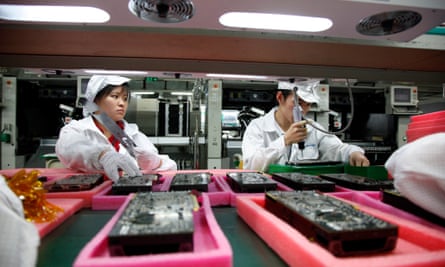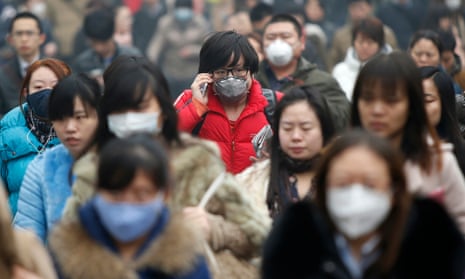Air pollution is easily China’s best-recognized environmental challenge. There’s no denying the devastating, nearly incomprehensible levels of smog in Beijing, Shenyang, Shanghai and many other Chinese cities – the pollution is so bad that you can even see it from space.
But pollution is only the beginning of China’s problems resulting from the country’s headlong race into economic development. Take your pick: water pollution, challenges to political and religious freedom, soil pollution, human rights problems, desertification, cancer villages and more. China has only recently begun to take stock of the true costs of its advance into economic powerdom. But intense domestic and international attention to China’s air quality, exemplified by the recent release of the documentary Under the Dome in February, may well be remembered as a tipping point for environmental action in China.
Under the Dome, a 100-minute, Inconvenient Truth-style documentary, paints a stark picture of the toll pollution is taking on Chinese people. The film by Chai Jing, which was released online on 28 February, was viewed more than 100m times in the first three days. The Chinese government first praised the film for raising important issues, then abruptly moved to halt coverage or discussion of the film by media outlets in China.
But it was too late: the discussion had already started. The first work day after the documentary aired, more than a dozen Chinese clean tech companies saw their stock prices surge, notably electric vehicle manufacturer BYD and pollution monitoring company Sail Hero.
While China’s neighbor, Russia, has long had strong environmental protection laws on the books but hasn’t enforced them, China has recently made big strides in strengthening its environmental laws as well as enforcing them.
In January, the country significantly upgraded its Environmental Protection Law, enabling local governments to fine polluters on an ongoing, daily basis until the problems are fixed, and eliminating a cap on those fines. Connecting efforts to eliminate pollution with the operating budgets of local governments has already unleashed a wave of fines – one of McDonald’s French fries suppliers received a record 3.9m yuan ($629,000) fine for water pollution in Shanghai last month – which may deter current or would-be polluters.
The new law also gives activists more power to tackle pollution: for the first time, Chinese NGOs have the right to sue polluters. It’s the latest development in the “war on pollution” announced by premier Li Keqiang last year.

Still, lack of follow-through on environmental policies remains one of the biggest obstacles to progress. Take China’s green lending laws, for example. Since 1995, China’s central bank has required financial institutions to place a priority on protecting the environment when choosing which projects to fund. However, a 2012 report from the Chinese Ministry of Environmental Protection found that only 12% of banks had taken this requirement to heart, and 18% showed no tangible evidence that they had adopted the policy.
As the world’s largest country by population, the world’s largest emitter of greenhouse gases, and the world’s biggest manufacturer, China has long faced global scrutiny for its social and environmental practices. Chinese manufacturers, in particular, face pressure from Chinese citizens, activists and business leaders, as well as from Western companies trying to improve their supply chains.
Perhaps the most influential citizen-led group is the Institute of Public and Environmental Affairs (IPEA), founded in 2006 by journalist-turned-environmental advocate Ma Jun. The group’s purpose is to shine a light on pollution in China. By making official pollution data easily available to the public, Ma has made it possible for people to take action in their communities, and has made it nearly impossible for polluters to hide.
Among the IPEA’s work is the China Pollution Map, a database that allows users to search for pollution violations by company name, and the Green Choice Alliance, an NGO network that lobbies multinational companies to help reduce pollution from their Chinese suppliers. In recognition of this work, Ma won a 2012 Goldman Prize, as well as a 2015 Skoll Foundation Award for Social Entrepreneurship.
One notable business-led environmental group is the Society of Entrepreneurs and Ecology (SEE), which has become the most prominent funder of environmental groups and projects in the country. SEE was founded in 2004 by some of China’s notable entrepreneurs, including Liu Xiaoguang, the head of the state-owned financial services and real estate firm Beijing Capital Group, and Wang Shi, founder and CEO of Vanke, the world’s largest real estate developer, in response to the rapid desertification of the Tengger Desert in northern China. Financed in part by contributions from each of the 87 founding members, many of them influential Chinese entrepreneurs, SEE has helped to fund a number of autonomous groups across China, including Ma’s IPEA.

The labor and human rights issues China faces are so well-known they have become a cliché: long hours, hazardous working conditions, low wages and limited – or nonexistent – worker protections. But just as it took years for the plight of Chinese laborers to become widely known in the West, the reforms taking place are also speeding ahead of public perception.
Years of work from labor rights advocates including China Labor Watch, the China Collective Bargaining Forum, and the China Labour Bulletin, among many others, have resulted in a workforce that has grown more empowered to demand fair pay and better conditions.
There are innumerable ways in which China casts a shadow, influencing its neighbors andthe entire world. Many of the most obvious ways are negative: water woes, pollution drift, dirty energy. But China has begun what appears to be an about-face on key global environmental issues, and with its size and influence, it also has an opportunity to be a role model for the world – and to spur major changes with its market power. If China grows a domestic market for green products, for instance, suppliers around the world will certainly rush to help fill it.
Last fall, China made a groundbreaking commitment to reach peak emissions no later than 2030, and Beijing has pledged to end its use of coal by 2020. And China has gone much further than simply serving as the manufacturing heart of the global solar boom: the country has for the past three years been setting a blistering pace for new solar installations. In the first quarter of 2015, China installed solar capacity equal to France’s entire output, which in addition to dramatically lowering emissions helps to further build economies of scale in solar manufacturing and expand solar’s reach.
Despite the many benefits of China’s green transition, a potential downside waits in the wings: as Chinese workers successfully improve their livelihoods, one of the most challenging reverberations may be the spread of cheap labor practices to other developing countries.
Cheap labor and lax regulations may fade away in China, but there are plenty of markets that can help with companies still engaged in the global race to the bottom. In other words, the same forces that brought jobs to China may well send them away.
Among the markets emerging for cheap manufacturing labor are Cambodia, Indonesia, Vietnam and even Myanmar. As low-cost manufacturing shifts away from China, will labor and environmental advocates lose all the progress made in China over the last 15 years and have to begin anew in each of these countries? Or can these new host countries learn lessons from China’s evolution and chart a better course to sustainable development?

Comments (…)
Sign in or create your Guardian account to join the discussion